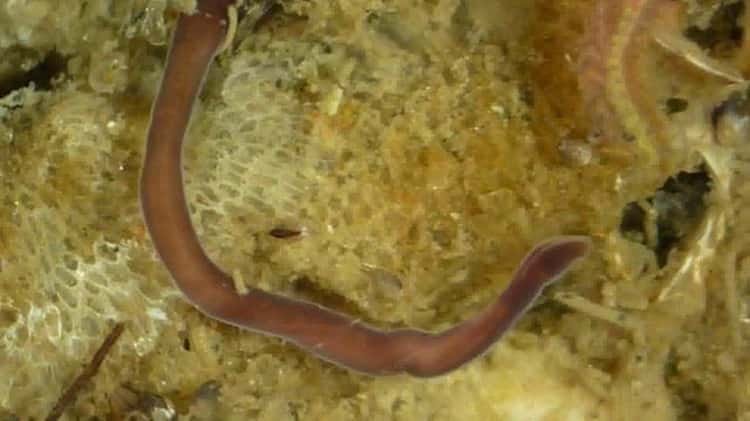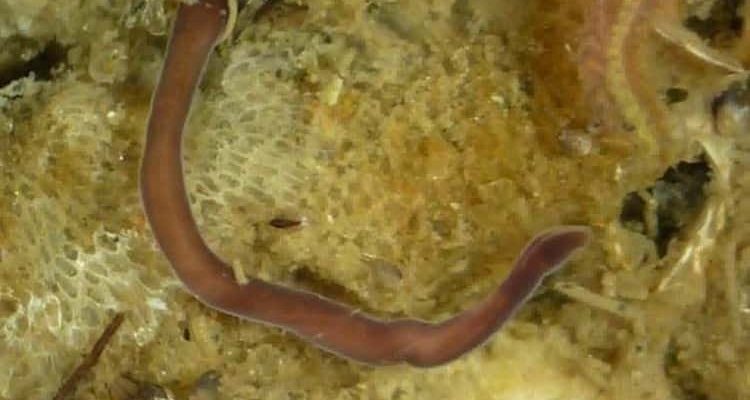
Imagine ribbon worms as the daredevils of the worm world. They’re long, flexible, and often a bit flashy in color, while annelid worms are more about stability and practicality, like that reliable friend who always shows up on time. Both groups play vital roles in their ecosystems, but their body structures and lifestyles are quite different. If you’ve ever wondered how these two types of worms stack up against each other, this exploration is for you!
What Are Ribbon Worms?
Ribbon worms, or **Nemertea**, are a phylum of worms that are known for their long, flat bodies, which can stretch up to several feet in length. They often live in marine environments, although some species can be found in freshwater and even on land. Their unique feature is a structure called a **proboscis**, which is like a retractable feeding tube. This helps them catch prey, typically small invertebrates. Think of it like a superhero with a hidden gadget that springs into action when needed!
One of the most interesting aspects of ribbon worms is their ability to regenerate. If a ribbon worm loses part of its body, it has the remarkable power to grow it back. This ability might seem magical, but it’s a fantastic survival strategy. It allows them to escape predators and thrive in various environments.
You might be wondering how these worms move around. Ribbon worms use their muscles to contract and expand, giving them a wavy, graceful movement through water or mud. They can also cling to surfaces with a sticky mucus they produce. Pretty handy, right?
What Are Annelid Worms?
Annelid worms belong to the phylum **Annelida**, which includes familiar species like earthworms and leeches. These worms have segmented bodies, with each segment acting almost like a tiny machine that helps in movement and digestion. This segmentation allows them to be very efficient movers, squirming through soil and water with ease. Imagine a train, where each car can function independently while still being part of the whole.
The annelid family is diverse, and they can be found in various habitats—from oceans to forests. Earthworms, for example, play a crucial role in soil health by aerating it and breaking down organic matter. They’re not the flashiest worms out there, but they get the job done, enriching the world around them.
Another fascinating trait of annelids is their closed circulatory system, which is a bit more advanced compared to the open system found in ribbon worms. This system allows for more efficient oxygen transport, which is vital for their survival, especially in low-oxygen environments.
Body Structure Differences
When comparing ribbon worms to annelid worms, the first thing you’ll notice is their body structure. Ribbon worms have long, **flat**, and unsegmented bodies, which can give them a ribbon-like appearance. Their lack of segments means they don’t have the same muscle organization as annelids, but they make up for it with their proboscis and fluid-filled body, which helps them move swiftly.
On the other hand, **annelids** are segmented, meaning their bodies are divided into many repeating units. Each segment can move independently, providing flexibility and agility. This segmentation is advantageous for burrowing and navigating through tight spaces, which is common for earthworms.
Moreover, while ribbon worms tend to be more elongated, annelids can vary greatly in size and shape. Some might be just a few millimeters long, while others can stretch several feet, depending on the species. It’s like comparing a sleek sports car (ribbon worms) to a versatile SUV (annelids)—both have their strengths!
Feeding and Diet
Both ribbon worms and annelid worms have unique approaches to feeding. Ribbon worms are typically carnivorous and use their **proboscis** to capture prey. Their feeding method is quite dramatic: they extend their proboscis out to grasp or spear their food, almost like a fisherman casting a line but underwater.
The diet of ribbon worms mainly consists of small invertebrates, and some are known to consume other worms! This makes them important predators in their ecosystems, helping to maintain a balance in the food chain. Honestly, it’s pretty cool to think of them as the active hunters of the worm world.
In contrast, **annelids** are often more versatile in their eating habits. While earthworms are primarily detritivores (feeding on decomposing organic matter), some annelids like leeches are blood-feeders. Annelids play a vital role in nutrient cycling by breaking down dead plant and animal material in the soil. So, while ribbon worms might be out hunting, annelids are working hard to recycle nutrients for plants and other organisms.
Habitat and Distribution
Another key difference between ribbon worms and annelid worms is where they call home. Ribbon worms predominantly thrive in marine environments, often found in coastal areas and oceans. Some species can even be located in brackish waters or on land, but those are the exceptions. Their preference for moist environments ties in with their need for water to help in movement and hunting.
Annelids, however, have a much broader range when it comes to habitat. You can find them in **marine**, **freshwater**, and **terrestrial** environments. Earthworms are common in gardens and fields, while marine annelids can be found in oceanic ecosystems. This adaptability helps them survive in diverse conditions, making them a crucial part of many ecosystems.
It’s fascinating how these two types of worms have carved out their niches in the world. Ribbon worms may seem exclusive to the sea, while annelids have become true survivors on land and in water alike.
Reproductive Strategies
When it comes to reproduction, ribbon worms and annelids take different approaches. Ribbon worms often reproduce through a process called **fragmentation**. This means a part of their body can break off and grow into a new worm. It’s almost like cloning! This isn’t just a survival tactic; it also allows them to increase their population quickly in favorable conditions.
On the flip side, **annelids** have a more varied reproductive strategy. Some species are hermaphroditic, meaning they carry both male and female reproductive organs, allowing them to mate with anyone they encounter. Earthworms, for example, exchange sperm with another worm to fertilize eggs. Others, like leeches, can reproduce through similar methods or even through direct development from fertilized eggs.
This difference in reproductive strategies speaks to how each group adapts to its environment. Ribbon worms can quickly populate a space, while the more complex reproductive strategies of annelids contribute to genetic diversity and resilience.
So, what can we take away from comparing ribbon worms and annelid worms? Both are fascinating creatures that play vital roles in their ecosystems, but they go about their lives in very different ways. Ribbon worms, with their impressive predation skills and regenerative abilities, embody the adventurous side of the worm family. In contrast, annelid worms, with their segmented bodies and diverse habitats, show us the beauty of adaptability and efficiency.
Understanding these differences not only enriches our perspective on these creatures but also highlights the complexity of life on Earth. Next time you spot a worm, think about what kind it might be and the unique life it leads. Whether it’s the sleek ribbon worm or the hardworking annelid, there’s a world of wonder beneath our feet—and in the waters around us!

